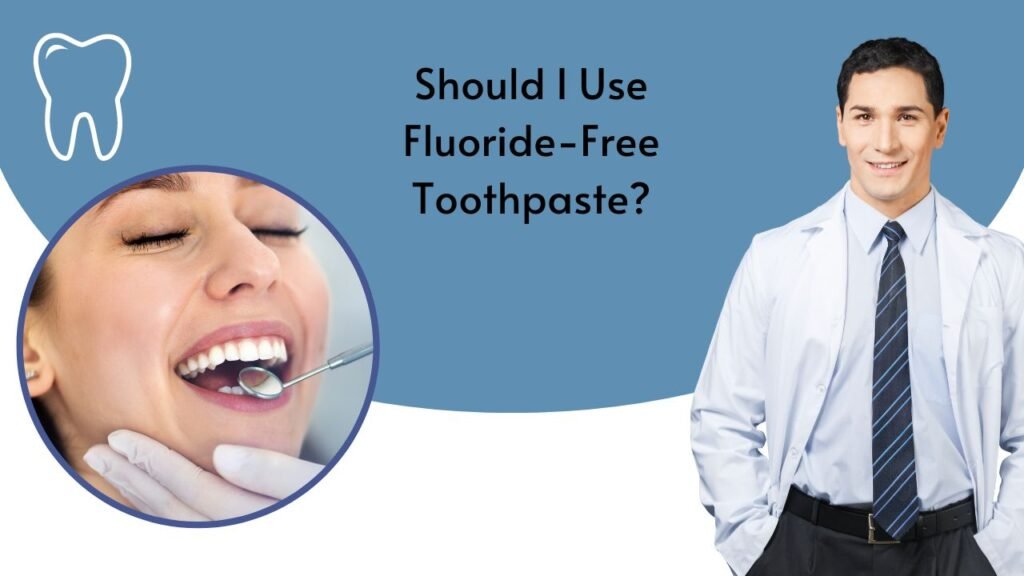While fluoride-free toothpaste is available, fluoride in toothpaste at recommended levels is safe and offers significant cavity prevention benefits. This guide explores both options to help you make an informed decision for your oral health.
Considering Fluoride-Free Toothpaste? Here’s What You Need to Know
Thinking about switching to fluoride-free toothpaste? Is fluoride safety a concern? This guide will explore the benefits of fluoride in toothpaste, address common concerns, and offer information on alternatives to help you make an informed decision for your oral health.
The Importance of Fluoride in Dental Health

What Is Fluoride and Why Is It Important?
Fluoride is a naturally occurring mineral that strengthens tooth enamel, making it more resistant to decay. It helps repair the early stages of tooth decay even before they become visible to the naked eye.
How Effective Is Fluoride in Preventing Cavities?
Did you know that fluoride can reduce cavities by up to 40%? This impressive statistic underscores the vital role fluoride plays in maintaining dental health. Numerous studies and health organizations support fluoride’s effectiveness in cavity prevention.
Addressing Common Concerns About Fluoride
Health Risks: Fact or Fiction?
Many people worry about potential health risks from fluoride, such as bone disease or neurological damage. However, these concerns typically arise from extremely high fluoride exposure, far above the levels found in toothpaste and fluoridated water. At recommended levels, fluoride is both safe and beneficial.
Understanding and Preventing Fluorosis
Excessive fluoride intake during childhood can lead to dental fluorosis, causing white or brown spots on the teeth. This is primarily a cosmetic concern in mild cases and may even be reversible with professional dental cleanings.
To prevent fluorosis:
- For Children: Supervise brushing, use a pea-sized amount of toothpaste, and ensure they spit out rather than swallow the toothpaste.
- For Adults: Avoid high-fluoride mouthwashes or supplements, especially if you live in an area with fluoridated water.
The Role of Fluoride in Toothpaste
How Does Fluoride Toothpaste Work?
Fluoride toothpaste strengthens enamel and helps prevent decay by promoting remineralization. This process repairs early stages of tooth decay before they become visible.
Safe Usage Guidelines
The amount of fluoride in toothpaste is carefully regulated to ensure safety. Here’s a quick guide:
- Children under age 3: Use a rice-sized amount of fluoride toothpaste.
- Children ages 3 to 6: Use a pea-sized amount.
- Adults: Use a strip of fluoride toothpaste.
Exploring Fluoride-Free Alternatives
What Are the Alternatives?
For those who prefer to avoid fluoride, there are alternatives such as:
- Nano-hydroxyapatite (n-HA): A promising fluoride substitute that helps to remineralize teeth.
- Casein phosphopeptides-amorphous calcium phosphate (CPP-ACP): Another alternative with some evidence of effectiveness, though more research is needed.
How Effective Are These Alternatives?
While alternatives like n-HA and CPP-ACP show potential, current research suggests they might not be as effective as fluoride in preventing cavities. It’s important to consider this when making your decision.
Environmental and Ethical Considerations
Water Fluoridation and Environmental Impact
Some people are concerned about the environmental impact of water fluoridation. While this is a separate issue, it’s worth noting that the amount of fluoride in toothpaste is minimal and doesn’t significantly impact the environment.
Expert Recommendations and Studies
Endorsements from Health Organizations
Major health organizations, including the American Dental Association (ADA) and the Centers for Disease Control and Prevention (CDC), strongly advocate for the use of fluoride in dental care due to its proven benefits.
Studies on Fluoride and Dental Health
Numerous studies confirm the effectiveness of fluoride in preventing dental decay. For example, a study published in BDJ Open (2019) found that fluoride toothpaste significantly reduces the incidence of cavities in both children and adults.
Practical Tips for Using Fluoride Toothpaste
How to Use Fluoride Toothpaste Safely
- Children under age 6: Use a pea-sized amount of fluoride toothpaste and supervise brushing to ensure they spit, not swallow, the toothpaste.
- Adults: Use a strip of fluoride toothpaste and follow regular brushing practices.
- Everyone: Spit out the toothpaste after brushing; do not swallow it.
Making an Informed Decision
Weighing the Pros and Cons
While fluoride-free toothpaste is an option, it’s crucial to understand the benefits you’re foregoing. Fluoride has a long track record of safety and effectiveness in preventing dental decay. Alternatives are available, but they may not offer the same level of protection.
Conclusion: Should You Use Fluoride-Free Toothpaste?
If you’re considering switching to fluoride-free toothpaste, weigh the benefits of fluoride against your concerns. Fluoride at recommended levels is safe and essential for maintaining strong, healthy teeth. For those still concerned, alternatives like nano-hydroxyapatite are available, though they may not be as effective.
By staying informed and consulting with your dentist, you can make the best choice for your dental health.
Quick Reference Table
| Age Group | Amount of Fluoride Toothpaste | Supervision Needed? |
|---|---|---|
| Children < 3 | Rice-sized (0.75 to 1 mg/day) | Yes |
| Children 3-6 | Pea-sized (0.2 to 0.3 mg/day) | Yes |
| Adults | Strip (0.1 mg daily/day) | No |
Find Your Perfect Dentist
Book appointments with top-rated dentists in your area